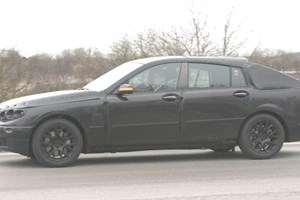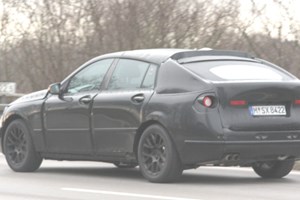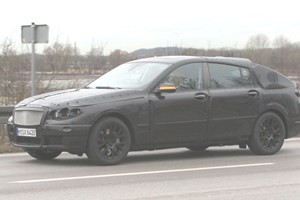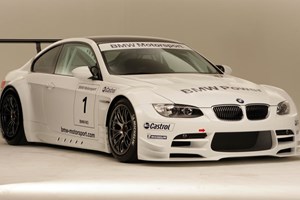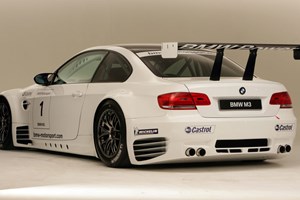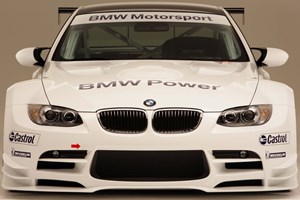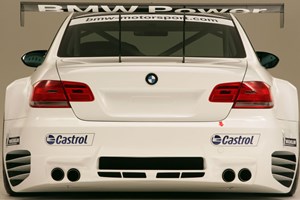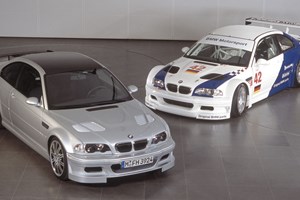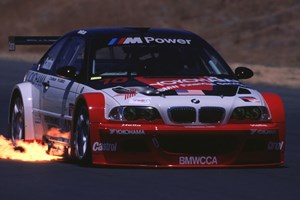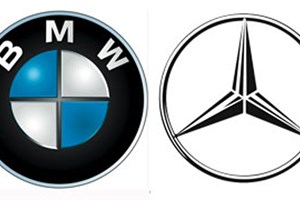
By Georg Kacher
Industry news
08 February 2008 13:03
CAR Online today reveals the extent to which BMW and Mercedes are plotting to cooperate on future models. In a wide-ranging plan, the two German premium marques could join forces to take on the might of Audi, with its backing and economies of scale of the whole Volkswagen group and, increasingly, Porsche.
BMW chairman Norbert Reithofer and his counterpart at Daimler, Dieter Zetsche, are coming to the conclusion that the two brands – for so long, fierce rivals – should work together rather than fight against each other. They’re already working together on hybrid SUVs (together with GM), and now the bosses are evaluating further, more far-reaching cooperation projects.
CAR’s Georg Kacher lifts the lid on the secret talks. Both brands know they must streamline products and processes – a relatively straightforward task compared with protecting the core individual brand values. With plenty of inside information provided by both parties, we have determined five areas where collaboration would be of mutual benefit.
1. BMW-Mercedes joint products
BMW needs a partner for Mini and Mercedes is looking for assistance on the next A/B-class. Why not work together? End result: bigger volumes, shared R&D expenditure and reduced purchasing costs. Trouble is, the Mini and A/B-class are not really compatible in size, character and engineering layout. That’s why Mercedes has talked to Fiat, GM, Ford, Hyundai, PSA and others about a possible joint venture. But in an ideal world, Mercedes would prefer to team up with a premium player, like BMW.
The Bavarians has already struck an engine deal with Peugeot, and it too is actively looking for partners on the third-generation Mini. By tying the smallest Mercs and BMWs, they could keep the front-wheel drive layout, but there are factions within Mercedes who want to develop the next A/B-class alongside the next 1-series. Why? Because today’s front-drive mini-MPVs have been financially (zero profits), demographically (average age 55+) and strategically (no component sharing) disastrous.
Switching the next A- and B-class to RWD could at a stroke make them seem more premium, potentially more profitable and dynamically much more appealing to younger buyers. What this approach requires most of all is time - time for the engineering chiefs to convince the bean counters, time to develop a sufficiently flexible new vehicle concept and time to prepare a historically polarised audience.
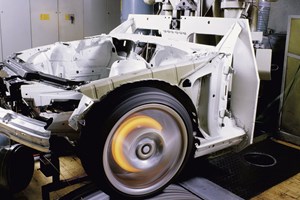
2 New brands for BMW and Mercedes
While BMW is mooting a fourth brand, Mercedes already has one. It’s called Smart. The micro car company has over time lost a whopping €3.5 billion, and axed four models (Formore SUV, Roadster, Coupé, Forfour) in just two years. But the positioning and the brand values are still up-to-date – Smart equals young, green, alternative, stylish, cosmopolitan, compact.
It could thus function quite well as an umbrella for those vehicle concepts which are neither fully compatible with neither BMW nor Mini. For instance, Munich has a secret project for a new congestion-busting city bike, the Clever trike codeveloped with several systems suppliers, the follow-up to the E1 electric car and the reincarnation of the Isetta bubble car. Conceived as a low- and zero-emissions vehicle, the Isetta would from 2012 also be offered in the US where BMW needs such a clean-air product to meet future legal requirements.
Although the smart Fortwo is not exactly the ultimate driving machine, the next-generation could, with a litte help from BMW, become exactly that. Worried about a loss of brand identity caused by an Isetta sister model? Check out existing pairings like A3/Golf or Chrysler 300C/E-class, then think again. Another factor encouraging such co-designs is that OEMs and suppliers can only apply a limited number of innovations (about 300 between now and 2015) to reach very similar goals. More so than ever, the art of branding is therefore essential to create different characters that comply with the same missions.
3. Can BMW and Mercedes share more engine tech?
Do BMW and Mercedes really need two different V12 engines? The 760i and the Rolls-Royce Phantom demonstrate that one V12 can serve two almost antagonistic purposes. Surely, the same could be achieved for the next 760i and the next S600/Maybach. While we’re at it, we would like to choose a similar approach for the V8 diesel which BMW will drop because sales have fallen to under 2000 units per year. Together with Mercedes-Benz, higher combined volumes could easily fund the mandatory evolution process.
And V8 petrol engines are another areas ripe for consolidation. General trends like direct-injection, sequential turbocharging, downsizing and downshifting (ie a V8 instead of a V10/V12) are sweeping the industry, and the two premium brands are investigating pooling resources more efficiently. Admittedly, there is zero overlap as far as the V6s and straight sixes are concerned, but four-cylinders again promise significant potential, probably with with PSA.
Brand-specific USPs like Efficient Dynamics or Valvetronic would of course be off-limits for the cooperation partners, but there is no reason why they couldn’t share the base engine. Consider for instance the three high-end 2.0-litre diesels offered by Audi, BMW and Mercedes. All three versions deliver 204bhp and 295lb ft. So much for zero differentiation...
4. Sharing other technology
Comand, MMI and iDrive - three different means to reach the same goal. Bluetec and AdBlu - two different names for the same solution. Imagine what parallel development has cost, and continues to cost, in areas like hybrid propulsion where BMW and Mercedes are already pooling their resources to create a European premium alternative to the h models from Lexus.
And that´s only the beginning. Next, the Germans need to join forces to develop the fuel cell. Here, M-B has an advantage it could share in exchange for BMW’s extensive hydrogen know-how. The two brands could feed the same fuel-cell with different raw energies, which would keep their halos intact and work for our environment.
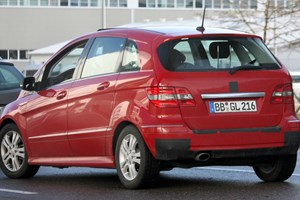
5. Sharing more modules
One logical modular partnership concerns transmissions, perhaps in conjunction with ZF. After all, BMW and Merc both need the same hardware: precise low-friction lightweight manual gearboxes, efficient eight-speed automatics, low-loss dual-clutch boxes with seven, eight or nine forward ratios. Out of the same parts shelf for both brands? Why not, providing there is enough scope for fine tuning.
Even more costly than transmissions and even less relevant to the end user are electronic architectures like CAN-BUS circuits which could be shared freely by BMW and Merc. Other modules are new driver assistance systems, air suspension applications, flexible seating concepts, electro-mechanical brakes, thermo management, common software standards like Autosar and of course critical energy savers like supercaps or lithium ion batteries.
Modules are core elements of a technology and product partnership which in an ideal world will lead to an assembly and distribution partnership. Too much control, too little freedom for individual thoughts and trends? True, there are many within BMW and Mercedes who are categorically against any kind of far-reaching cooperation, fearing the loss of the competitive edge which is seen as the key driving force behind brand excellence.
But this thought process may soon be in need of a revision. After all, a deal between the two German premium giants is not about personal vanities of the breach of copyright. It’s about survival of the fittest. And fit one must be when your rivals are high-rollers like Audi/VW/Porsche and Toyota/Lexus.
